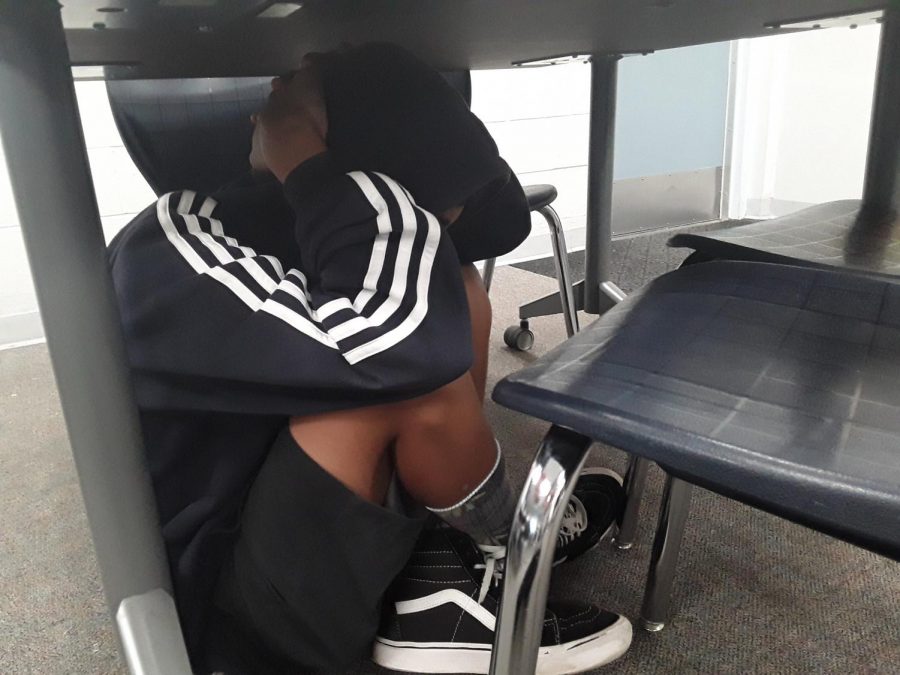Duck, Cover, and Hold On to Your Questions About Earthquake Safety
Nate Otazu (eighth grade) demonstrating an earthquake drill procedure.
October 4, 2019
When you live in California, earthquake drills are a necessity. There’s even an event dedicated to practicing safety during a real earthquake. But are the drills we practice effective?
Mrs. Vienna, assistant principal and head of the search and rescue team here at McAuliffe, seems qualified to answer. With her being such an important part in the case of real extreme weather, interviewing her is the obvious choice.
“I do think the drills are effective, yeah,” she says. “The more kids do the drill practice, the more they’ll revert to what they have practiced before…” She mentions how the most important thing during a drill is a teacher going through all the steps possible. “[They need to] talk about all procedures, such as what happens when a student gets hurt and duck and cover rules. They need to go through all possibilities of what’s likely to happen during a crisis.”
Vienna does have a point about how teachers should talk about every possibility there is to ensure student safety. After asking Mikayla King, an eighth-grader at McAuliffe, about whether she believes she’d know what to do during the event of an earthquake, she replied with a basic, “no.”
“I mean, I guess I know what to do during the drills,” King goes on to say, “but, like, would I actually be safe doing the things we practice in another place? What am I supposed to do if I’m outside? And would a desk protect me from things falling down because of the earthquake?”
Going back to Vienna helped me find the answer to one of those things: the desk question. A lot of students doubt that a desk can protect you from falling debris, but is that true?
I asked Vienna, and she said yes.
“If a building is falling down, I can climb under my desk to protect me… Even if these walls collapse, at least they would fall on top of my desk and make it collapse on me, instead of directly, you know, [the wall falling] on top of me.”
By now, it’s been established that earthquake safety in California is a must-have. Chances of earthquakes are likely, and safety advisers are making strides to improve their drills every day. Schools do the Great California Shakeout, in which all schools in CA do an earthquake drill at once. Are earthquake drills as necessary in other parts of the US, though?
I ask Molly Tittle, a graduate student from Maryland, some questions about the drills she practiced.
“I think earthquake drills are effective, but they don’t occur frequently enough here,” Tittle informs me. She can barely remember said drills because of how little her school practiced them. “I think it was mostly getting under the desk for a few minutes and holding on.”
I asked her if she would know what to do during a real earthquake. She simply replied, “not in the slightest.” But maybe she doesn’t need to know. She does, after all, live on the east coast. Earthquakes there are a rarity.
Overall, earthquake safety in California is mandatory. California experiences far more earthquakes than Maryland or any other east coast state. Earthquake drills here are improving every day, but for now just remember: duck, cover, and hold on.



Lucas • Oct 17, 2019 at 12:09 pm
Great job
Nanna • Oct 6, 2019 at 3:01 am
Great article! Wish offices would do the same drill because during the last earthquake, people were running around like chickens with their heads cut off. The type-A people were shouting directions without any real knowledge of what they were saying. The smartest thing that was said was, “I wish I paid more attention when we had these in school.”
Andrew Bensavage • Oct 4, 2019 at 4:11 pm
Great job emma